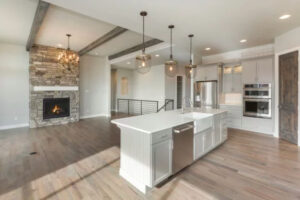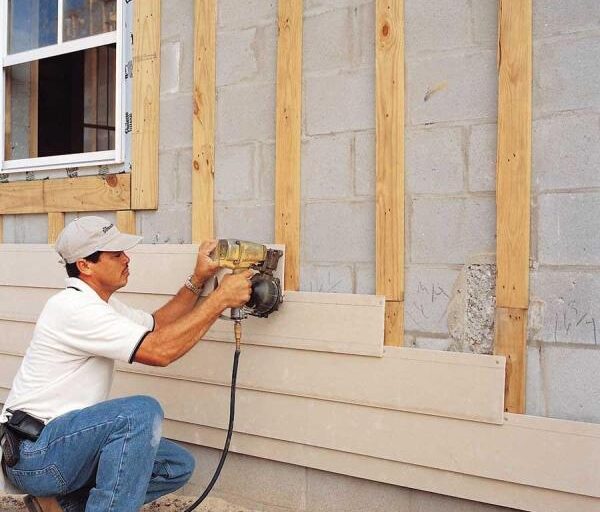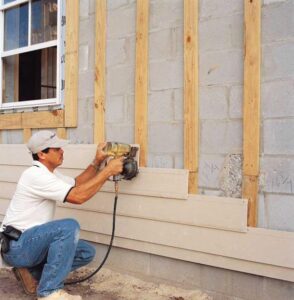 Kitchen Remodeling Lexington KY is a large job, whether cosmetic changes or a complete gut renovation. Most projects require a certain amount of disruption to your everyday life, and even experienced do-it-yourselfers make mistakes.
Kitchen Remodeling Lexington KY is a large job, whether cosmetic changes or a complete gut renovation. Most projects require a certain amount of disruption to your everyday life, and even experienced do-it-yourselfers make mistakes.
Kitchen remodeling can increase your home’s resale value. It’s also an opportunity to incorporate energy-efficient appliances and materials to save you monthly money.
Cabinets are necessary for kitchen storage but can also serve as an accent piece to your overall design. There are many different options for cabinets, including doors, drawer fronts, hardware, and other accessories. You can also get creative with your cabinetry by adding a unique door style or changing the color and stain.
When choosing cabinets, you should look for quality construction and durable materials that will last years. For example, solid wood and plywood have higher humidity and moisture resistance than particleboard or MDF, so they are better choices for a kitchen. It would be best to consider the work triangle when planning your cabinet layout; this is a 70-year-old concept that helps you optimize your workflow by limiting the distance between the sink, stove, and refrigerator.
While cabinetry is the foundation of your kitchen, you can also add a custom touch by including crown molding on top of your cabinets. This simple addition can help improve the look of standard builder-grade cabinets and eliminate the gap between the cabinets and your ceiling. You can also add decorative molding around the perimeter of your kitchen to create a custom look.
If you’re on a budget, you can still give your cabinets a facelift by replacing their doors with new, classic Shaker-style fronts. Other low-cost upgrades include revamping your backsplash, removing upper cabinet doors, and adding open shelving or a stacked pantry. If you have sentimental items, like a set of china or barware that you love, you can showcase them by displaying them on open shelves rather than hiding them behind closed doors. This is a great way to make your home feel more inviting and is especially suited for smaller spaces.
Countertops are a key kitchen feature that helps define the space’s overall style. There is a wide variety of countertop materials to choose from that can be combined in many ways to create a unique look. Many homeowners are drawn to granite countertops, which can be highly customized and have a timeless beauty. They are also a durable choice that can stand up to heat, moisture, and other elements.
Laminate countertops are affordable and very customizable, making them a popular choice for renovating on a budget. They come in various colors and patterns and can be matched with other kitchen features, including tile backsplashes. Tile countertops are also inexpensive and easy for a DIYer to install. They are available in various styles and can be paired with other kitchen materials, such as marble.
Another option is to use durable natural stone countertops, which can add a high level of resale value. They are available in various colors, and each countertop is unique, as every slab of stone appears different due to its veining and design.
Repurposed wood or butcher-block countertops can be one of the most beautiful and warm options for a kitchen remodel. They can add a rustic or vintage feel to the room and complement a range of other countertop surfaces. However, they require extensive sealing and regular upkeep to keep them looking their best.
Styl steel countertops can be a great option for a more modern look. They are hygienic, resistant to bacteria, and can be installed over existing cabinets.
Appliances are generally the largest chunk of money spent on kitchen remodeling. Choosing new appliances with a style that matches function will greatly impact how your kitchen looks and feels. Choose a refrigerator, cooktop, or dishwasher with a design that fits your layout and complements other kitchen elements like cabinets, countertops, and backsplashes.
Replacing your appliances with energy-efficient models is a great way to save money and create a modern kitchen. ENERGY STAR appliances meet strict efficiency and performance standards while offering a wide selection of styles and finishes that complement any kitchen.
While your appliances are being replaced, consider upgrading to panel-ready options that allow a custom panel to be installed on the front of the appliance to match your cabinetry. This is a great way to ensure your new kitchen looks refined for years, even when trends change.
Once your new cabinets and countertops are installed, it’s time to install your appliances. This may include moving the location of your refrigerator or stove and rewiring to accommodate the new locations. Rerouting your plumbing lines will also be necessary if you change your sink position or add a pass-through window.
The finishing touches of your kitchen remodel make it feel truly unique to you and your family. Finishing touches include baseboards, crown molding, and toe-kicks that protect your walls and cabinets while adding architectural interest to the room. You can also add a pop of color or texture with your backsplash, drawer pulls, or sink faucet. These are all small changes that can greatly impact how your kitchen looks and functions.
Flooring is an important consideration in any kitchen remodel. New floors can add a fresh appearance to an entire room and make the space more comfortable underfoot. Various options are available for kitchen floors, including tile, laminate, and solid wood. Laminate is usually less expensive than solid wood, but both have advantages in the kitchen. Solid wood is hardwearing and can withstand a lot of wear and tear, but it may warp if exposed to water for extended periods.
A full kitchen remodel involves replacing all the major surfaces in the room, including the floor, walls, countertops, and sinks. It may also include adding new features like islands, custom cabinetry, and upgraded appliances with energy-efficient models. This type of renovation is for something other than the do-it-yourselfer and will likely require the help of a general contractor, designers, or architects.
You can replace the cabinet doors or install an open shelving system for a more limited remodel. This will provide a major visual upgrade without altering the kitchen’s footprint. Another option is to update the backsplash or replace the countertop. Adding a breakfast bar or rethinking the placement of the stove and oven can also make a significant difference.
Replacing old windows with UPVC units is an inexpensive way to improve the appearance of your kitchen and increase the amount of natural light in the space. If your current appliances are in good condition, selling them will help offset the cost of new ones.
As any experienced kitchen remodeler will tell you, lighting is crucial to the success of your renovation. It can elevate a room from good to great, adding beauty and function while improving the overall feel of the space. A properly lit kitchen can also be safer for cooking and eating and make tasks like food prep easier on the eyes.
Pendant lights are a popular option for kitchens, but it’s important to remember that they should be mounted high enough to light the surface below them effectively. To avoid glare when you’re working, they should be at least 2 1/2 feet from the countertop or dining table beneath them. Alternatively, under-cabinet and recessed lights can be installed to provide ample task lighting.
As the kitchen becomes more of a gathering space for homeowners, wall art has become more prevalent, and recessed, adjustable fixtures can be used to illuminate these works of art. The MR16 bulbs in these fixtures come in a wide range of beam spreads, so you can see the perfect one to highlight your favorite piece.
Remember to include recessed lighting for hallways and entrances, too. This clever kitchen remodeling eliminates dark spots in these spaces and makes it easy to move from one part of the house to the next.
Finally, consider adding dimmer switches to your kitchen’s lighting. This simple DIY project can greatly enhance the ambiance of your kitchen and allow you to set the perfect mood for any occasion.


